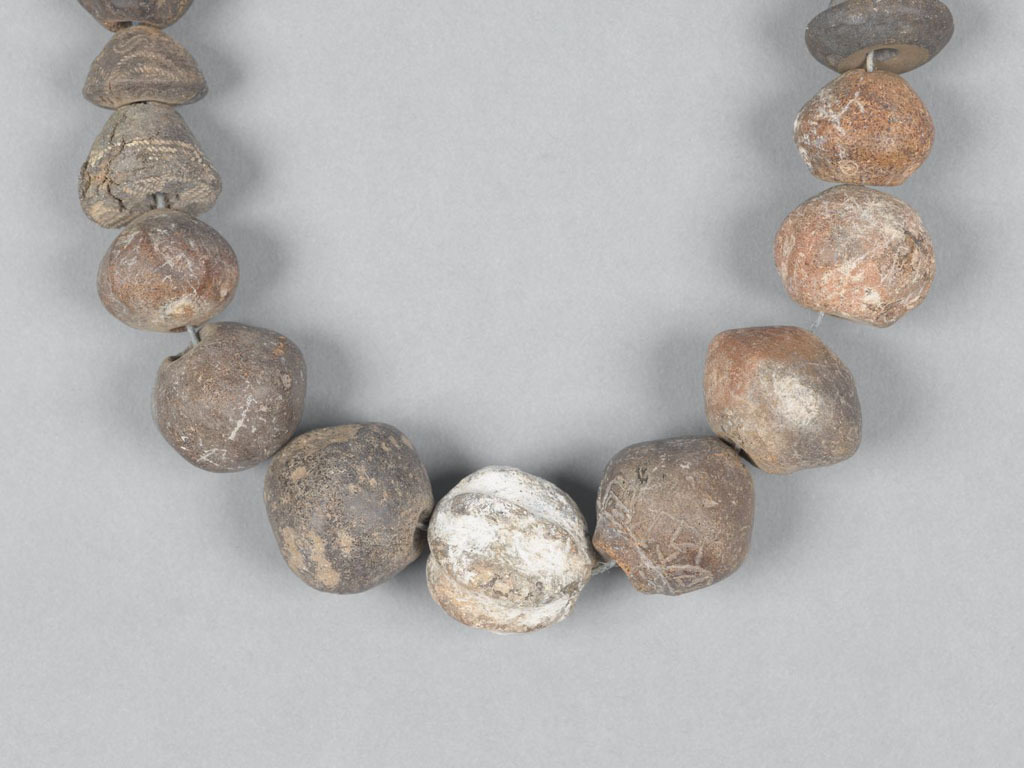Etruscan
Collection of 23 Spindle Whorls, 8th-7th centuries BCE
Terracotta, faience
15 ½ × 3 × 1 ½ in. (39.4 × 7.6 × 3.8 cm) (fully extended)
3-D Object/Sculpture
CA 6560
Learn More
Originally identified as a necklace when acquired, these terracotta “beads” are actually distinct objects that did not originally go together. All are terracotta spindle whorls, which are tools used to help spin yarn. Spindle whorls can be a variety of shapes, including discs, truncated cones or pyramids, or biconical objects that are usually pierced through the center. They were a common domestic item, since many households produced their own textiles, but they are also found in sanctuaries and tombs as funerary offerings. Women, because of their roles as textile producers in the home, are often associated with these objects. Most of the 23 spindle whorls in the Menil Collection are made from either a fine black clay product known as bucchero, or a coarser red or brown clay called impasto—both characteristic of products from Etruria. One spindle whorl, however, is in faience and most likely Egyptian in origin. It is unlikely all came from the same context, but the archaeological provenience (findspot) of these pieces has been lost.
Related collections and exhibitions



